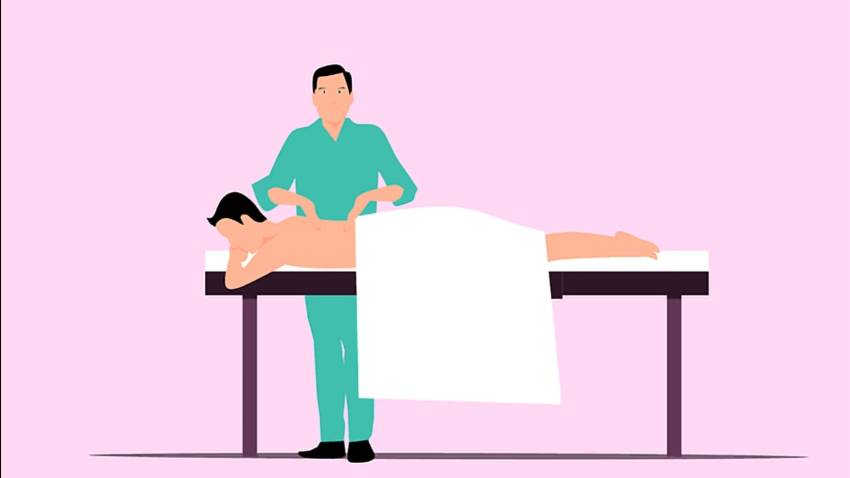Physiotherapist at Home vs. Clinic: Which One is Better for Recovery?

New Delhi : When recovering from an injury or managing a chronic condition, physiotherapy plays a crucial role in restoring mobility and function. Traditionally, patients have visited clinics to receive treatment, but with the advent of home-based services, many are now considering having a physiotherapist at home.
In this article, we will discuss the pros and cons of the two settings so that you can decide which one may be most suitable for your recovery process.
Convenience and Accessibility
Home-Based Physiotherapy
The greatest advantage of having a physiotherapist at home is convenience. Patients do not have to go out, particularly for mobility-impaired or pain-disabled patients. Traffic to get to a clinic in busy cities might be time and energy-wasting. Home visits eliminate the issue, and patients can concentrate on rehabilitation.
Clinic-Based Physiotherapy:
Going to a clinic requires patients to commute, and this might not be comfortable for all. Clinics, though, have accommodating time tables, such as early morning or late evening, to suit different requirements. For those who need consistency, going to sessions at a clinic can instil discipline and dedication to their rehab program.
Tailored Care and Comfort
Home-Based Physiotherapy:
Home treatment can establish a soothing ambience, which has the potential to make therapy more effective. Home settings can reduce stress and encourage patients to come to the clinic. Another benefit is that home physiotherapy entails customised treatment since a therapist is dedicated to treating a single patient without distraction, which is concerned with a clinical setting.
Clinic-Based Physiotherapy:
Clinics work towards developing a professional and controlled setting, which might be encouraging for certain patients. The fact that other patients are around develops a supportive and solidarity atmosphere. Clinic therapists treat many patients, but they are also educated to provide personal attention in such a setting. Certain patients may find it encouraging to be among other individuals suffering from the same issues.
Resources and Instrumentation
Home-Based Physiotherapy:
One obvious limitation of home sessions is the presence of high-tech equipment. Although therapists can adapt to incorporate mobile devices, high-tech equipment and technology are not readily mobilised. Therapists can, however, modify exercises with equipment at home and emphasise functional movements that can be applied to the patient's daily life. This can be very helpful in implementing a functional and feasible home exercise program.
Clinic-Based Physiotherapy:
Clinics usually have special equipment and technology that can optimise treatment effectiveness. Having access to these centres enables therapists to utilise techniques that are most suitable for the individual needs of the patient. In cases where more advanced interventions are needed, the clinic environment can provide more intensive treatment options.
Cost Considerations Home-Based Physiotherapy:
Personalised home visits can be pricier because of the expense of travel and the individualised character of the therapy. Nonetheless, from a cost and time of travel perspective, the overall price can be identical. Also, home therapy is reimbursable by certain insurance policies, so it is good to check out coverage information with your carrier.
Clinic-Based Physiotherapy:
Clinics are cheaper on a visit-to-visit basis, but patients must factor in traveling time and costs. Frequent visit patients will notice these costs adding up. To keep costs low, the cost plan or package offer should be far better negotiated and discussed with the clinic.
Infection Prevention and Safety
Home-Based Physiotherapy
Home therapy also restricts contact with other patients, reducing the risk of infection—a concern that has increased in importance over the last few years. Therapists also follow very rigid hygiene protocols to provide a clean environment for therapy. Post-op patients or immunocompromised patients can also avail themselves of home therapy as a safe equivalent.
Clinic-Based Physiotherapy:
Legal clinics must have strict sanitary and infection procedures to safeguard patients and employees from exposure. It is self-evident that being in an environment with more than one person tends to increase exposure. Patients must balance personal illness and comfort when considering whether or not to go home or to a clinic.
Motivation and Accountability
Home-Based Physiotherapy:
While the home environment is comfortable, it may also have distractions that would be counter to the therapy process. The lack of a clinical environment may dissuade some patients from cooperating. The therapist's one-on-one attention could possibly facilitate the creation of an effective therapeutic relationship, which can enhance responsibility and adherence to the treatment process.
Clinic-Based Physiotherapy:
The clinic's work environment can foster purpose and direction. Seeing people become well may inspire an individual. Being able to continue going back and sitting through sessions on a routine basis may inspire the potential to work towards healing. For some people, working in a clinic is a constant reminder of self-care, and it is a pleasant relief.
A choice between using a physiotherapist in your home versus visiting a clinic for sessions revolves around your unique needs, circumstances, and state of health. Physiotherapy in the home is best for people who appreciate the convenience, personal space, and undivided attention, but a clinic setup allows for a full range of equipment and organization.
If you are looking for physiotherapy in Mumbai, consider, affordability, resources available, and motivation before deciding. Talking to a healthcare provider can also assist in finding the best solution for your road to recovery. By considering these factors, you can make a well-informed decision that helps you towards improved health.








